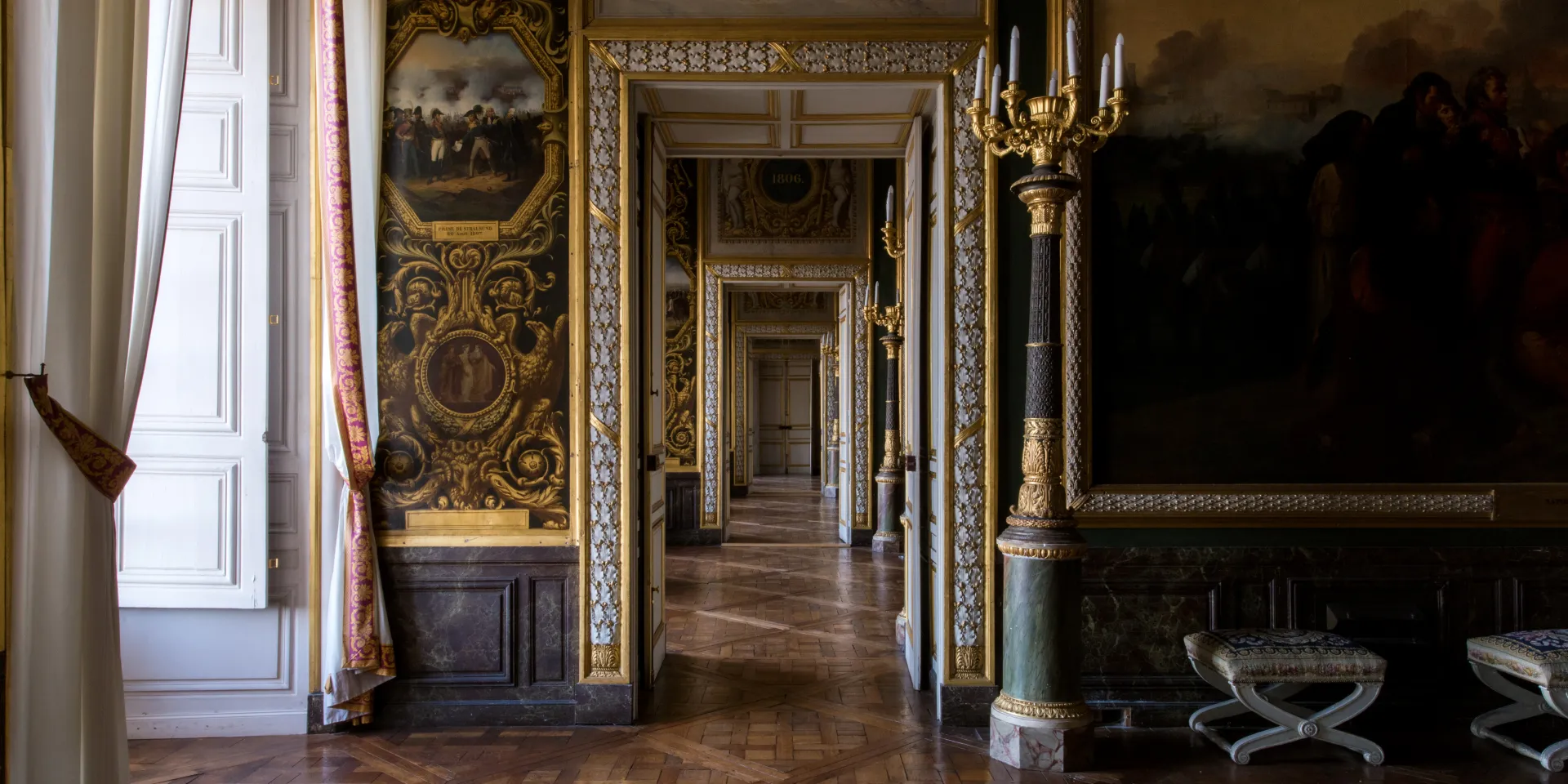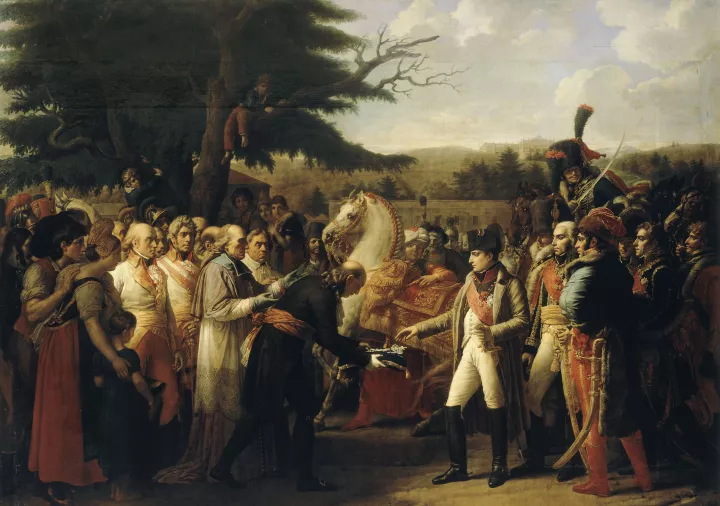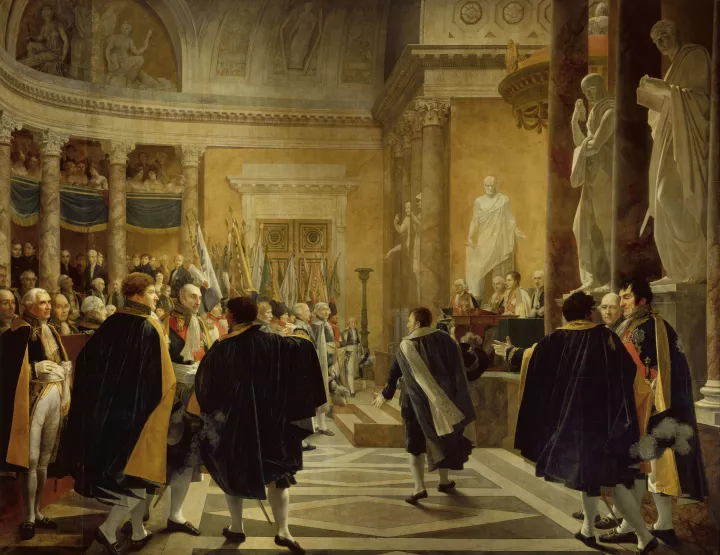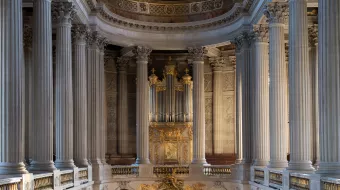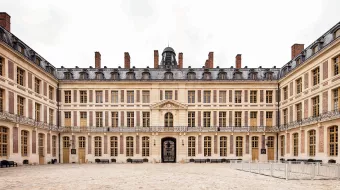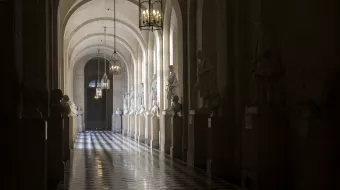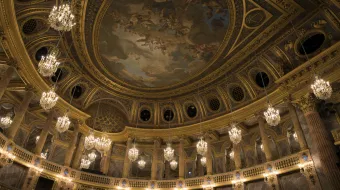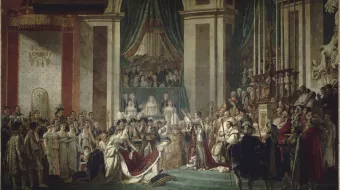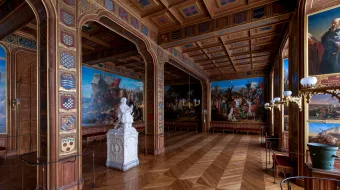A political project
As a contemporary of Napoleon I, who preceded him on the throne of France, King Louis-Philippe was eager to obtain the support of former members of the Empire and the favour of Bonapartist opinion. To do so, he made a number of gestures to commemorate the Emperor’s memory. The pinnacle was in 1840 with the “Retour des Cendres”, the return of Napoleon’s remains to Paris from the Island of Saint Helena.
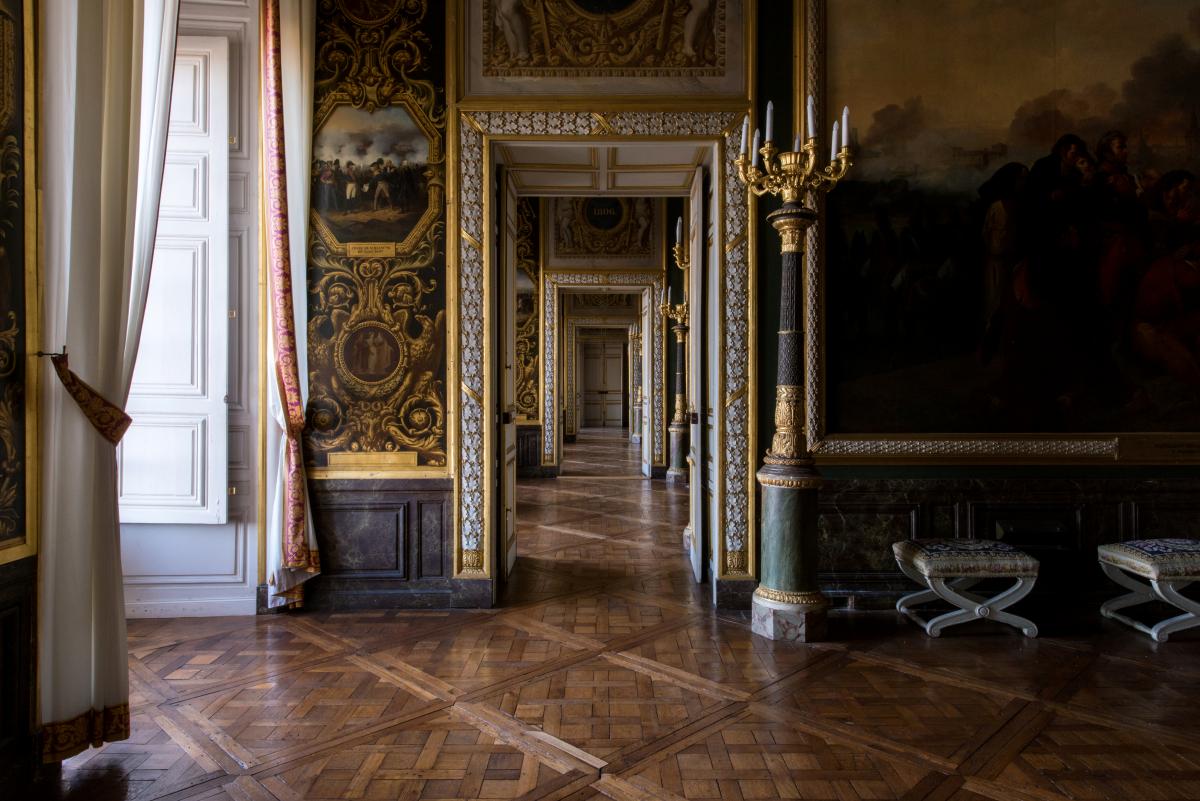
The Empire Rooms
© EPV/Thomas Garnier
To the memory of Napoleon I
At Versailles, the king sought to honour the Empire in a number of spaces on the ground floor of the Palace’s South Wing, under the Gallery of Battles. He displayed most of the large paintings Napoleon commissioned for his political communications, and those that decorated the imperial residences. The 13 Empire rooms retrace year after year, campaign after campaign, the incredible destiny of a young artillery officer who became one of the masters of Europe in a few short years.

Houdon, Bust of Napoleon I
© RMN-GP (Château de Versailles) / © Gérard Blot
The Neoclassical painters in the spotlight
These paintings, from some of the best artists of the time, such as, Gros, Girodet, Guérin, Meynier and Regnault, have been extensively reproduced in historical works since the beginning of the 19th century and are now part of our common iconographic heritage.
The paintings are complemented by decorative compositions created under the direction of painter Jean Alaux, helping to immerse visitors in the atmosphere of the time. Today, a beautiful set of Empire furnishings and objets d’art from the dismantled imperial residences - the Palais des Tuileries in Paris and the Château de Saint-Cloud - deepen this immersion.
The Historic galleries also include
- The 1830 Room
- The Gallery of Great Battles
- The Coronation Room
- The Africa, Crimea and Italy Rooms
- The 1792 Room
- The Crusades Rooms
- The North and South Attics



